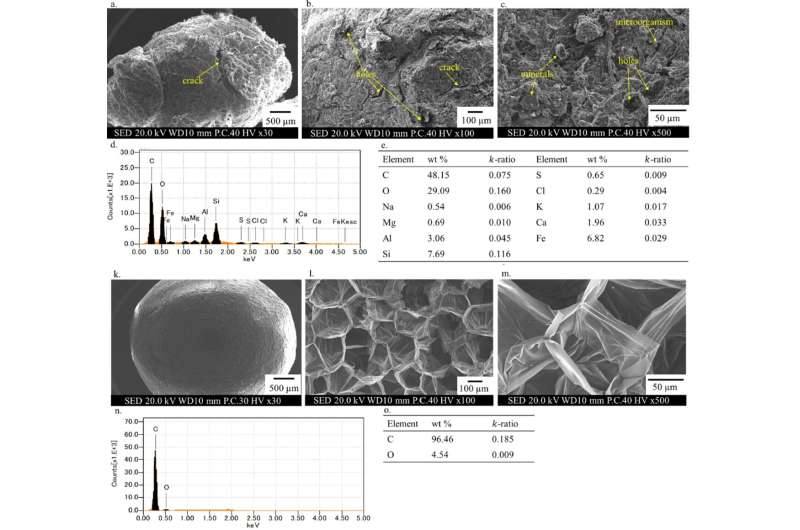This article has been reviewed according to Science X's editorial process and policies. Editors have highlighted the following attributes while ensuring the content's credibility:
fact-checked
trusted source
proofread
Team finds plastic-associated metalloids in the urban river environments of Mongolia

A team led by researchers from Tokyo Metropolitan University studied how microplastics in the environment accumulate heavy metals. As the microplastics spread, so does their toxic cargo. Focusing on polystyrene foam, the team collected particles along a river running through Ulaanbaatar, Mongolia. They found significant levels of heavy metals accumulated on the particles, reflecting local land use and industries, as well as surface features such as holes and biofilms that help pollutants collect.
The spread of plastic debris into the natural environment is an ecological disaster. As plastic waste makes its way into both terrestrial and marine environments, much of it through mismanagement, particles get weathered and break down, gradually becoming too small to be easily collected and separated. Being lightweight, low density and highly resilient, they spread extremely rapidly.
Though they are largely chemically inert, scientists are now finding that they can also be effective vectors for whatever might be absorbed on them, including deadly pollutants. Research is now underway on what sorts of toxins they might help transport, and how they do it.
A team led by Dr. Batdulam Battulga, an affiliated researcher of the Department of Geography of Tokyo Metropolitan University now in the Japan Atomic Energy Agency, and Professor Masayuki Kawahigashi from Tokyo Metropolitan University have been examining the properties of polystyrene foam particles collected at various locations along the Tuul River running through Ulaanbaatar, Mongolia. Their work is published in the journal Ecotoxicology and Environmental Safety.
Due to continued development of the capital city, plastic waste arising from construction materials has become ubiquitous in the environment, particularly polystyrene foam used in insulation. The tiny fragments were subjected to a range of diagnostics to ascertain how they had changed, and what they now contained.
The researchers found a range of metallic contaminants that are not present in the original material, particularly large amounts of copper and chromium. Strong signals were found for metals associated with specific land uses or industries in the city, such as chemicals used in glass and ceramic manufacture and pollutant enriched sediments from wastewater treatment plants.
The team also looked in detail at the physical properties of the particles themselves. Scanning electron microscopy (SEM) images of the particles showed that exposure to the environment had significantly changed the surface properties of the particles, creating fractures, holes, and pits. Many of the images also showed mineral crystal particles, showing how the roughened surface could become home to inorganic pollutants absorbed from the environment.
The researchers also found traces of biofilms, layers of bacteria that adhere to surfaces. Such films are known to develop electric charges and chemical groups on their surfaces that can effectively absorb metallic contaminants. Combined with the stronger accumulation of metals in meso-sized (5–20mm) particles than in micro-sized (<5mm) particles, the team concluded that these surface features played a key role in the collection of heavy metals on plastic debris.
Through insights into the mechanism by which metals are adsorbed onto plastic fragments, the team hopes to understand the scope of the impact of plastic pollutants in our environment and the hidden dangers they might pose.
More information: Batdulam Battulga et al, Plastic-associated metal(loid)s in the urban river environments of Mongolia, Ecotoxicology and Environmental Safety (2023). DOI: 10.1016/j.ecoenv.2023.115100
Provided by Tokyo Metropolitan University




















